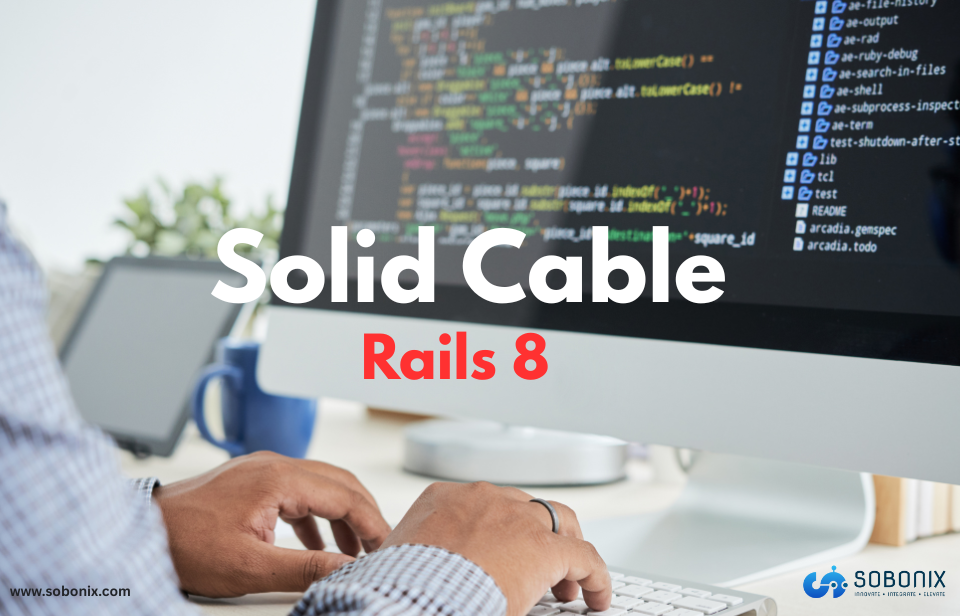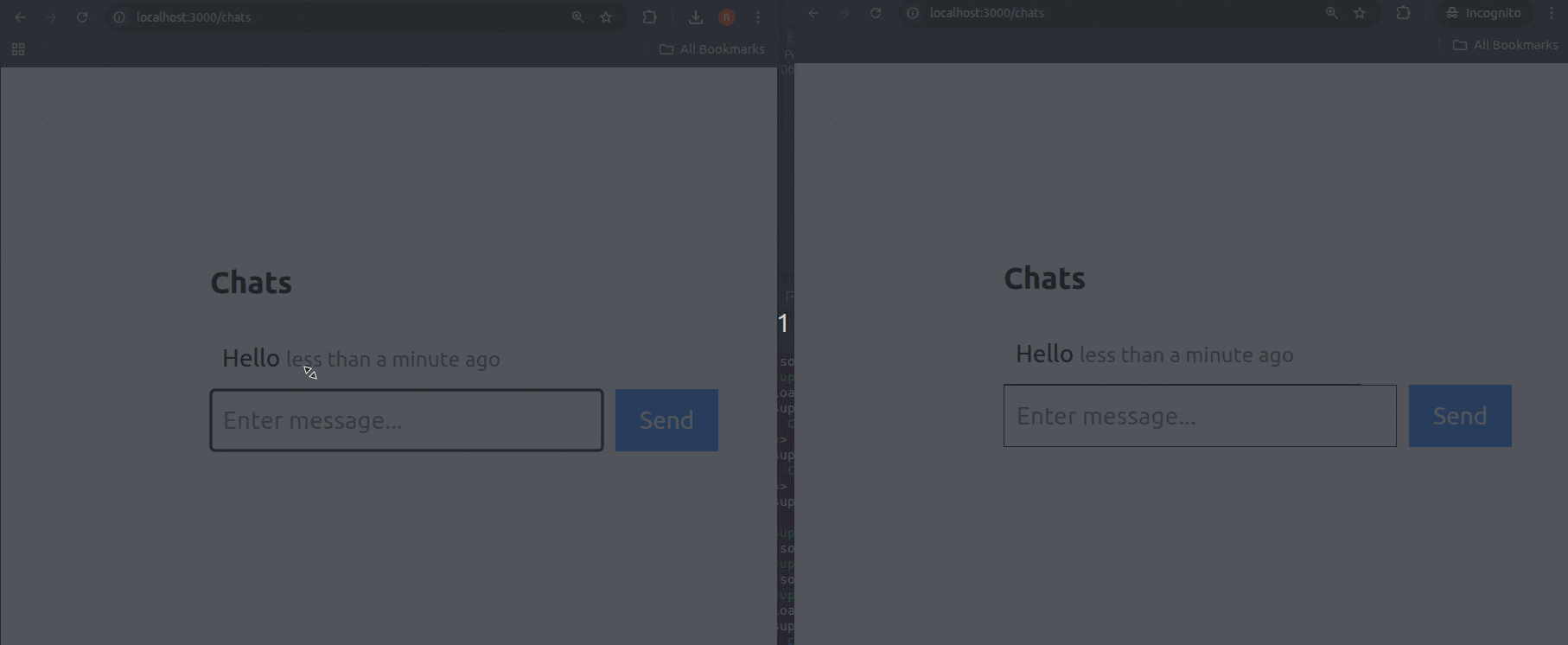Rails 8 Solid Cable: Real-Time Features Without Redis
Discover how Rails 8 leverages Solid Cable to enable real-time features without relying on Redis, simplifying development and boosting performance for modern web applications

Real-time apps are no longer reserved for tech giants. Whether you're building live chat, notifications, or collaborative features, Rails 8's Solid Cable makes it easier than ever — no Redis required.
In this post, we’ll explore what Solid Cable is, how it works, why it’s a game-changer, and how you can build a real-time chat app using it — all while saving on infrastructure and setup complexity.
What is Solid Cable?
Solid Cable is a new database-backed adapter for Action Cable, introduced in Rails 8 (November 2024). It lets you build real-time features using your app’s existing database — PostgreSQL, SQLite, or MySQL — instead of relying on Redis.
This simplifies the tech stack, lowers costs, and removes the need for managing external servers.
How It Works
1. WebSocket messages are written to a database table.
2. Solid Cable polls the table (default: every 0.1s).
3. Connected clients receive broadcasts via WebSocket.
Why Solid Cable is a Game-Changer for Real-Time Rails Apps
| Feature | Solid Cable | Redis |
|---|---|---|
| Infrastructure | Built-in database | External server |
| Cost | Zero | Cloud service fees |
| Setup | Out of the box | Additional configuration |
| Maintenance | Low | Moderate to high |
| Performance | Excellent for most apps | Slightly faster for high traffic |
Supported Databases -
1. SQLite (default, great for simple production setups)
2. PostgreSQL (recommended for concurrency)
3. MySQL
Solid Cable vs Redis: Performance Benchmarks
| Backend | Users | Poll Interval | RTT Avg (ms) |
|---|---|---|---|
| SQLite (Solid Cable) | 100 | 0.1s | 135.82 |
| SQLite (Solid Cable) | 500 | 0.1s | 271.79 |
| Redis | 100 | — | 68.95 |
| Redis | 500 | — | 87.5 |
Conclusion: Redis is faster on paper, but Solid Cable is fast enough for most use cases — especially when polling is set to 0.01s.
When to Use Solid Cable
Use Solid Cable if:
1. You're building MVPs, internal tools, or medium-scale apps
2. You want minimal infrastructure
3. You don’t already use Redis for jobs or caching
Stick with Redis if:
1. You need ultra-low latency and high concurrency
2. Redis is already part of your stack
3. You're building large-scale, performance-critical systems
Build a Real-Time Chat App in Rails 8 Using Solid Cable
Let’s walk through building a live chat application using Solid Cable in Rails 8 — with Turbo Streams and no Redis required.
Step 1: Create a New Rails 8 App
Run the following command to create a new Rails app:
rails new super-solid-chat -c tailwindThe -c tailwind flag adds Tailwind CSS for styling (optional).
Step 2: Create Model and Controller
Create a Chat model to store messages and a controller for handling requests:
rails g model chat message:string
rails g controller chats index create
rails db:migrateStep 3: Configure Routes
Update config/routes.rb to define routes for the chats controller:
resources :chats, only: [:index, :create]Step 4: Build the Controller
Modify app/controllers/chats_controller.rb to handle chat creation and display:
class ChatsController < ApplicationController
def index
@chats = Chat.all
end
def create
@chat = Chat.new(chat_params)
@chat.save
head :no_content
end
private
def chat_params
params.require(:chat).permit(:message)
end
endStep 5: Set Up the Views with Turbo Stream
- Display and form partials with Turbo Stream integration
- Auto-reset form with JavaScript
- Include Turbo Frame & Turbo Stream helpers
Step 6: Configure Solid Cable
Solid Cable is enabled by default in Rails 8, but here’s the setup in case you need to configure it manually:
bundle add solid_cable
bin/rails solid_cable:installConfigure config/cable.yml for development:
development:
adapter: solid_cable
connects_to:
database:
writing: cable
polling_interval: 0.1.seconds
message_retention: 1.dayUpdate config/database.yml to include a separate database for Solid Cable:
default: &default
adapter: sqlite3
pool: <%= ENV.fetch("RAILS_MAX_THREADS") { 5 } %>
timeout: 5000
development:
primary:
<<: *default
database: storage/development.sqlite3
cable:
<<: *default
database: storage/development_cable.sqlite3
migrations_paths: db/cable_migrate
Step 7: Prepare the Database
rails db:prepareThis sets up the database, including Solid Cable’s schema.
Step 8: Enable Real-Time Broadcasting
Update app/models/chat.rb to broadcast new messages using Turbo Streams:
class Chat < ApplicationRecord
validates :message, presence: true
after_create_commit do
broadcast_append_to "chats", target: "chats"
end
endStep 9: Test the App
Start the Rails server after asset compilation:
rails assets:precompile
rails sOpen two browser tabs and navigate to http://localhost:3000.
Send a message in one tab — it should appear instantly in the other, thanks to Solid Cable + Turbo Streams.

Inspecting Solid Cable WebSocket Messages
You can inspect stored WebSocket messages from the solid_cable_messages table using SQLite CLI or Rails console.
rails console
ActiveRecord::Base.establish_connection(Rails.configuration.database_configuration["development"]["cable"])
ActiveRecord::Base.connection.execute("SELECT id, CAST(channel AS TEXT) AS channel, CAST(payload AS TEXT) AS payload, created_at, channel_hash FROM solid_cable_messages LIMIT 5")
ActiveRecord::Base.establish_connection(:primary)Tips to Optimize Solid Cable in Production
| Recommendation | Why it matters |
|---|---|
| Use PostgreSQL | Better concurrency support |
| Tune Polling Interval | Set to 0.01s for near real-time |
| Separate DB for Cable | Keeps message polling isolated |
Avoid db:drop |
Known issues in Rails 8.0 migrations |
Use Cases for Solid Cable in Rails 8
- Live Chat Applications
- Real-Time Notifications
- Collaborative Tools
- Internal Dashboards
- MVPs and Startup Products
FAQs
- Is Solid Cable the default in Rails 8?
Yes — it replaces Redis as the default production adapter. - Can I use Solid Cable with PostgreSQL?
Absolutely. PostgreSQL is the recommended database for production use. - Is it fast enough for real-time apps?
Yes. With proper tuning, it performs well for most medium-scale apps. - When should I still use Redis?
If you need ultra-low latency or already use Redis for jobs or caching.
Final Thoughts
Solid Cable brings real-time WebSocket support to Rails 8 without Redis. It’s faster to set up, cheaper to run, and powerful enough for most modern applications.
If you’re building real-time features in Ruby on Rails, Solid Cable is your new best friend.

Build Real-Time Rails Apps With Sobonix
At Sobonix, we help startups and enterprises build modern, scalable Ruby on Rails applications with real-time features, Turbo, Hotwire, and modern UI.
Let our experts build your next Rails app → Get in touch with Sobonix